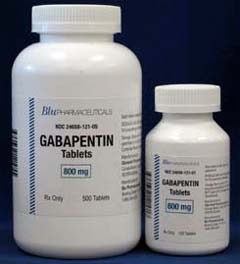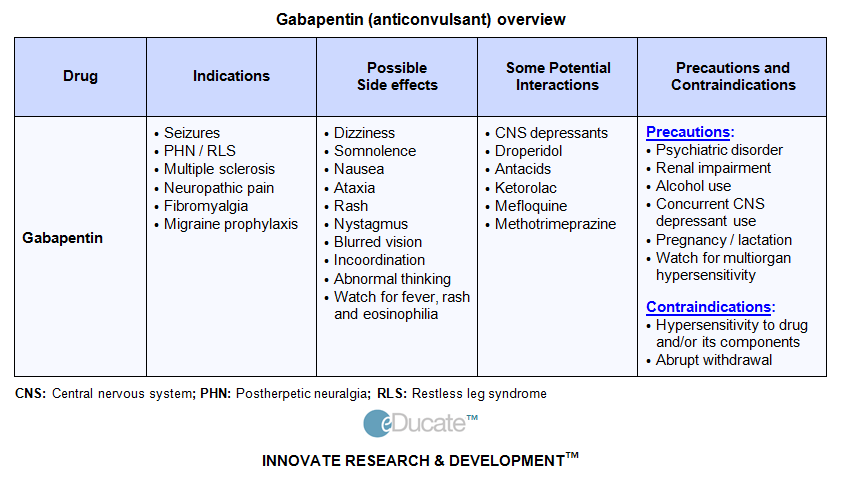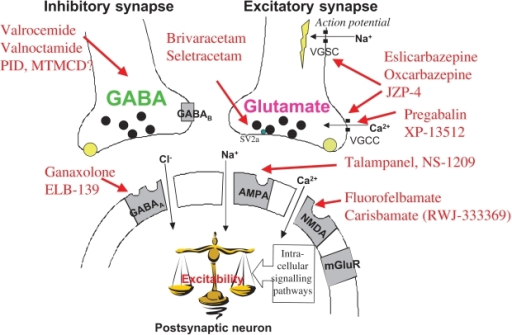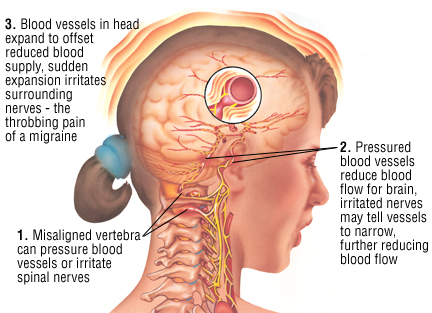| Product Name | Price | Shipping | Total | Order |
| Gabapentin 800mg – 180 Tabs | $189 | free | $189 | Order |
| Gabapentin 600mg – 180 Tabs | $179 | free | $179 | Order |
| Gabapentin 400mg – 180 Tabs | $169 | free | $169 | Order |
| Gabapentin 300mg 180tab | $159 | free | $159 | Order |

Gabapentin (Neurontin) is a pharmaceutical drug, specifically a GABA analog. It was originally developed to treat epilepsy, and currently is also used to relieve neuropathic pain. There are, however, concerns regarding the quality of the trials conducted for a number of conditions
Gabapentin capsules, tablets, and oral solution are used to help control certain types of seizures in people who have epilepsy. Gabapentin capsules, tablets, and oral solution are also used to relieve the pain of postherpetic neuralgia (PHN; the burning, stabbing pain or aches that may last for months or years after an attack of shingles). Gabapentin extended-release tablets (Horizant) are used to treat restless legs syndrome (RLS; a condition that causes discomfort in the legs and a strong urge to move the legs, especially at night and when sitting or lying down).
Gabapentin is in a class of medications called anticonvulsants. Gabapentin treats seizures by decreasing abnormal excitement in the brain. Gabapentin relieves the pain of PHN by changing the way the body senses pain. It is not known exactly how gabapentin works to treat restless legs syndrome.
But you must complete the health questionnaires very honestly and carefully. The doctors must know your health condition to prescribe you the prescriptions. They may call you to discuss your health condition and medical condition and they will not prescribe you the medicines if they cannot catch you.
Gabapentin Warnings and Precautions

Neurontin has been tested in children and adolescents from 3 to 18 years old, and its effects have been found to be the same as those in adults, when dosage is appropriately adjusted. Neurontin may impair the ability to drive or operate heavy machinery.
Neurontin should not be discontinued suddenly – sudden withdrawal may cause seizures to return or occur more frequently. Dosage should be gradually tapered over at least 7 days when Neurontin is discontinued. For Pregnant or Nursing Mothers: Neurontin has not been studied in pregnant women, but other antiepileptic drugs have been known to cause birth defects. Studies in animals indicate that very high doses of Neurontin can cause bone and kidney problems. It is not known whether Neurontin passes into breast milk, and nursing mothers should be cautious about using Neurontin.
You yourself must know the drug you are going to take. You can not overdose the drugs especially fioricet. Fioricet contains tylenol, tylenol can damage your liver, heart, and kidneys seriously if you overdose it. You also must know the side effects of Fioricet and Gabapentin. You also must know the Drug Interactions of Fioricet, and Gabapentin. You should not order fioricet, order Gabapentin online if you are taking drugs in those drug interaction lists.
By some websites and health professional reasearch, Gabapentin is even a better Analgesic than Tramadol. That reasearch is from a health professional group from the University of Victoria. Because tramadol is a controlled medicine now, we do suggest you order gabapentin online. We provide the cheapest authentic COD gabapentin and cod fioricet online with USPS priority mail services.
How Gabapentin is typically packaged?
Capsule: 100, 300, 400mg
Tablet: 100, 300, 400, 600, 800mg
Oral solution (brand-name only): 250mg/5mL

Normal Dosage Of Gabapentin
USAGE FOR EPILEPSY: The usual starting dose is 300mg for adults and children over 12 years of age. This dose is taken on the evening of the first day. Your doctor may then increase the dose on the second day to 300mg in the morning, and 300mg in the evening. On the third day you may be increased to 300mg three times per day. The maximum dosage is 3600mg per day. Gabapentin is not recommended for children under 12 years.
USAGE FOR DIABETIC NERVE PAIN: The dosage follows the rules for epilepsy, and may be continued for up to 5 months. If you suffer from any kidney problems, the doctor may issue a lower dosage.
USAGE AS A NERVE BLOCK: Gabapentin is not marketed for use as a nerve block, but is commonly used as such following successful applications. The dosage follows the same rules as for epilepsy patients, with a maximum dosage of 3600mg. For chronic pain conditions, Gabapentin may need
Gabapentin Mechanism of action

The mechanism of the anticonvulsant action of gabapentin has not been fully described. Several possible mechanisms for pain improvement have been discussed. Though similar in structure to the endogenous neurotransmitter GABA, gabapentin has not been shown to bind to GABA receptors at concentrations at or below 1 mM. Gabapentin modulates the action of glutamate decarboxylase (GAD) and branched chain aminotransferase (BCAT), two enzymes involved in GABA biosynthesis. In human and rat studies, gabapentin was found to increase GABA biosynthesis, and to increase non-synaptic GABA neurotransmission in vitro.
Gabapentin prevents seizures in a wide variety of models in animals, including generalized tonic-clonic and partial seizures. Gabapentin has no activity at GABAA or GABAB receptors of GABA uptake carriers of brain. Gabapentin interacts with a high-affinity binding site in brain membranes, which has recently been identified as an auxiliary subunit of voltage-sensitive Ca2+ channels.
Gabapentin has been shown to bind to the α2δ-1 subunit of voltage gated calcium ion channels, which contributes to its pain attenuation effects in diabetic neuropathy and post-herpetic neuralgia. Other neurophysiological findings indicate that gabapentin also interacts with NMDA receptors, protein kinase C, and inflammatory cytokines.
Gabapentin prevents pain responses in several animal models of hyperalgesia and prevents neuronal death in vitro and in vivo with models of the neurodegenerative disease amyotrophic lateral sclerosis (ALS). Gabapentin is also active in models that detect anxiolytic activity.
Although gabapentin may have several different pharmacological actions, it appears that modulation of GABA synthesis and glutamate synthesis may be important.
Gabapentin interacts with cortical neurons at auxillary subunits of voltage-sensitive calcium channels. Gabapentin increases the synaptic concentration of GABA, enhances GABA responses at non-synaptic sites in neuronal tissues, and reduces the release of mono-amine neurotransmitters.
One of the mechanisms implicated in this effect of gabapentin is the reduction of the axon excitability measured as an amplitude change of the presynaptic fibre volley (FV) in the CA1 area of the hippocampus. This is mediated through its binding to presynaptic NMDA receptors.
Other studies have shown that the antihyperalgesic and antiallodynic effects of gabapentin are mediated by the descending noradrenergic system, resulting in the activation of spinal alpha2-adrenergic receptors. Gabapentin has also been shown to bind and activate the adenosine A1 receptor.
Gabapentin Interactions with Drugs and Other Substances
Drugs or substances that may interact with Neurontin include:
- Antacids (within 2 hours) – taking Neurontin with antacids may reduce Neurontin’s effects.
- Alcohol – frequent use of alcohol may seriously reduce the effectiveness of Neurontin.
- Tagamet (cimetidine) – may increase blood levels of Neurontin.
- Dilantin (phenytoin) – taking Neurontin with Dilantin may lead to phenytoin toxicity.
- Central nervous system (CNS) depressants, including cold medicines – these medications may add to the sedative effects of Neurontin.
Gabapentin For Migraine Prevention

International and domestic studies that have evaluated Neurontin for migraine prevention suggest that it is effective. In a study of 63 patients with migraine (with or without aura), gabapentin significantly reduced migraine frequency and intensity among 30 patients who received it. In this study, adverse events were mild to moderate in severity.
Similarly, in a large study, 143 people with migraine received daily doses of Neurontin or placebo for 12 weeks. At the end of 12 weeks, the migraine rate had declined from 4.2 migraines before treatment to 2.7 migraines after treatment in those who received this drug. This decrease was significantly greater than the decrease from 4.1 migraines to 3.5 migraines among those who received placebo. Of the 56 gabapentin recipients, 46% had at least a 50% reduction in the four-week migraine rate. Drug-related adverse events (sleepiness and dizziness) led to drug withdrawal in 13% of patients in the gabapentin group compared with 7% in the placebo group. The researchers concluded that this medication is an effective and well-tolerated preventive for migraine.
However, the American Academy of Neurology (AAN), the organization that provides guidance for the use of drugs to prevent migraines, has stated that there is not enough evidence at this time to support the use of gabapentin for migraine prevention. Healthcare professionals can choose to prescribe gabapentin when other prevention therapies have not worked, however.
Some people can prevent migraines by avoiding triggers. Others have prevented migraines successfully through relaxation techniques, acupuncture, or exercise. However, these therapies alone don’t work for everyone. Some people also need treatment with medication to reduce the number of migraines they have. The drugs used to prevent migraines are different from drugs that to treat migraines once a migraine starts. Drugs that prevent migraines, such as gabapentin, must be taken daily.
For more information about Gabapentin, please check Gabapentin information in drugs.com or Gabapentin information in Webmd.com
Generic Neurontin Availability
NEURONTIN (gabapentin – capsule;oral)
- Manufacturer: UPJOHN
Approval date: December 30, 1993
Strength(s): 100MG [RLD] [AB], 300MG [RLD] [AB], 400MG [RLD] [AB]
NEURONTIN (gabapentin – solution;oral)
- Manufacturer: UPJOHN
Approval date: March 2, 2000
Strength(s): 250MG/5ML [RLD] [AA]
NEURONTIN (gabapentin – tablet;oral)
- Manufacturer: UPJOHN
Approval date: October 9, 1998
Strength(s): 600MG [RLD] [AB], 800MG [RLD] [AB]
Has a generic version of Neurontin been approved?
Note: Fraudulent online pharmacies may attempt to sell an illegal generic version of Neurontin. These medications may be counterfeit and potentially unsafe. If you purchase medications online, be sure you are buying from a reputable and valid online pharmacy. Ask your health care provider for advice if you are unsure about the online purchase of any medication.
AB: Products meeting necessary bioequivalence requirements. Multisource drug products listed under the same heading (i.e., identical active ingredients(s), dosage form, and route(s) of administration) and having the same strength (see Therapeutic Equivalence-Related Terms, Pharmaceutical Equivalents) generally will be coded AB if a study is submitted demonstrating bioequivalence.
In certain instances, a number is added to the end of the AB code to make a three character code (i.e., AB1, AB2, AB3, etc.). Three-character codes are assigned only in situations when more than one reference listed drug of the same strength has been designated under the same heading.
Two or more reference listed drugs are generally selected only when there are at least two potential reference drug products which are not bioequivalent to each other. If a study is submitted that demonstrates bioequivalence to a specific listed drug product, the generic product will be given the same three-character code as the reference listed drug it was compared against.
Gabapentin Product Summary
This product requires a valid prescription for shipment, please note that HealthWarehouse.com may not accept prescriptions faxed or emailed by patients.
-
- PRESCRIPTION REQUIRED
- The original prescription must be mailed to us.
- The doctor may also fax or call in the prescription information directly to one of our pharmacists.
- This medication MUST BE SHIPPED with SIGNATURE CONFIRMATION.
Please see link for more information: https://www.healthwarehouse.com/gabapentin
Gabapentin is a controlled substance in the state of Kentucky and will be dispensed following the rules set by the State Board of Pharmacy in Kentucky.
IMPORTANT: HOW TO USE THIS INFORMATION: This is a summary and does NOT have all possible information about this product. This information does not assure that this product is safe, effective, or appropriate for you. This information is not individual medical advice and does not substitute for the advice of your health care professional. Always ask your health care professional for complete information about this product and your specific health needs.
GABAPENTIN – ORAL
(gab-uh-PEN-tin)
COMMON BRAND NAME(S): Neurontin
USES: Gabapentin is used with other medications to prevent and control seizures. It is also used to relieve nerve pain following shingles (a painful rash due to herpes zoster infection) in adults. Gabapentin is known as an anticonvulsant or antiepileptic drug.
OTHER USES: This section contains uses of this drug that are not listed in the approved professional labeling for the drug but that may be prescribed by your health care professional. Use this drug for a condition that is listed in this section only if it has been so prescribed by your health care professional. Gabapentin may also be used to treat other nerve pain conditions (such as diabetic neuropathy, peripheral neuropathy, trigeminal neuralgia) and restless legs syndrome.
HOW TO USE: Read the Medication Guide and, if available, the Patient Information Leaflet provided by your pharmacist before you start taking gabapentin and each time you get a refill. If you have any questions, ask your doctor or pharmacist. Take this medication by mouth with or without food as directed by your doctor. Dosage is based on your medical condition and response to treatment. For children, the dosage is also based on weight. If you are taking the tablets and your doctor directs you to split the tablet in half, take the other half-tablet at your next scheduled dose. Discard half tablets if not used within several days of splitting them. If you are taking the capsules, swallow them whole with plenty of water. It is very important to follow your doctor’s dosing instructions exactly. During the first few days of treatment, your doctor may gradually increase your dose so your body can adjust to the medication. To minimize side effects, take the very first dose at bedtime. Take this medication regularly to get the most benefit from it. This drug works best when the amount of medicine in your body is kept at a constant level. Therefore, take gabapentin at evenly spaced intervals at the same time(s) each day. If you are taking this medication 3 times a day to control seizures, do not let more than 12 hours pass between doses because your seizures may increase. Do not take this medication more often or increase your dose without consulting your doctor. Your condition will not improve any faster and the risk of serious side effects may increase. Do not stop taking this medication without consulting your doctor. Some conditions may become worse when the drug is suddenly stopped. Your dose may need to be gradually decreased. Antacids containing aluminum or magnesium may interfere with the absorption of this medication. Therefore, if you are also taking an antacid, it is best to take gabapentin at least 2 hours after taking the antacid. Different forms of gabapentin (such as immediate-release, sustained-release, enacarbil sustained-release) are absorbed in the body differently. Do not switch from one form to the other without consulting your doctor. Tell your doctor if your condition does not improve or if it worsens.
SIDE EFFECTS: Drowsiness, dizziness, loss of coordination, tiredness, blurred/double vision, unusual eye movements, or shaking (tremor) may occur. If any of these effects persist or worsen, tell your doctor or pharmacist promptly. Remember that your doctor has prescribed this medication because he or she has judged that the benefit to you is greater than the risk of side effects. Many people using this medication do not have serious side effects. Tell your doctor right away if any of these unlikely but serious side effects occur: swelling of the hands/ankles/feet, signs of infection (such as fever, cough, persistent sore throat). A small number of people who take anticonvulsants for any condition (such as seizures, bipolar disorder, pain) may experience depression, suicidal thoughts/attempts, or other mental/mood problems. Tell your doctor immediately if you or your family/caregiver notice any unusual/sudden changes in your mood, thoughts, or behavior including signs of depression, suicidal thoughts/attempts, thoughts about harming yourself. Get medical help right away if you have any serious side effects, including: unusual fever, swollen glands, yellowing skin/eyes, unusual tiredness, dark urine, change in the amount of urine, chest pain. A very serious allergic reaction to this drug is rare. However, get medical help right away if you notice any symptoms of a serious allergic reaction, including: rash, itching/swelling (especially of the face/tongue/throat), severe dizziness, trouble breathing. This is not a complete list of possible side effects. If you notice other effects not listed above, contact your doctor or pharmacist. In the US – Call your doctor for medical advice about side effects. You may report side effects to FDA at 1-800-FDA-1088. In Canada – Call your doctor for medical advice about side effects. You may report side effects to Health Canada at 1-866-234-2345.
PRECAUTIONS: Before taking gabapentin, tell your doctor or pharmacist if you are allergic to it; or to gabapentin enacarbil; or if you have any other allergies. This product may contain inactive ingredients, which can cause allergic reactions or other problems. Talk to your pharmacist for more details. Before using this medication, tell your doctor or pharmacist your medical history, especially of: kidney disease, mental/mood problems (such as depression, thoughts of suicide). This drug may make you dizzy or drowsy or cause blurred vision. Do not drive, use machinery, or do any activity that requires alertness or clear vision until you are sure you can perform such activities safely. Limit alcoholic beverages. Before having surgery, tell your doctor or dentist about all the products you use (including prescription drugs, nonprescription drugs, and herbal products). Older adults may be more sensitive to the side effects of this drug, especially swelling of the hands/ankles/feet and loss of coordination. Children may be more sensitive to the side effects of this drug, especially mental/mood/behavior changes (such as hostility, problems concentrating, restlessness). During pregnancy, this medication should be used only when clearly needed. Discuss the risks and benefits with your doctor. Gabapentin passes into breast milk. Consult your doctor before breast-feeding.
DRUG INTERACTIONS: See also How to Use section. Drug interactions may change how your medications work or increase your risk for serious side effects. This document does not contain all possible drug interactions. Keep a list of all the products you use (including prescription/nonprescription drugs and herbal products) and share it with your doctor and pharmacist. Do not start, stop, or change the dosage of any medicines without your doctor’s approval. Tell your doctor or pharmacist if you are taking other products that cause drowsiness including alcohol, antihistamines (such as cetirizine, diphenhydramine), drugs for sleep or anxiety (such as alprazolam, diazepam, zolpidem), muscle relaxants, and narcotic pain relievers (such as codeine, morphine). Check the labels on all your medicines (such as allergy or cough-and-cold products) because they may contain ingredients that cause drowsiness. Ask your pharmacist about using those products safely. Do not use this medication with other medications that contain gabapentin (including gabapentin enacarbil). This medication may interfere with certain laboratory tests for urine protein. Make sure laboratory personnel and all your doctors know you use this drug.
OVERDOSE: If overdose is suspected, contact a poison control center or emergency room immediately. US residents can call the US National Poison Hotline at 1-800-222-1222. Canada residents can call a provincial poison control center. Symptoms of overdose may include: severe drowsiness, slurred speech, weakness.
NOTES: Do not share this medication with others.
MISSED DOSE: If you miss a dose, take it as soon as you remember. If it is near the time of the next dose, skip the missed dose and resume your usual dosing schedule. Do not double the dose to catch up. If you take gabapentin 3 times a day to control seizures, do not let more than 12 hours pass between doses because your seizures may increase. Consult your doctor right away if this occurs.
STORAGE: Store at room temperature away from light and moisture. Do not store in the bathroom. Keep all medications away from children and pets. Do not flush medications down the toilet or pour them into a drain unless instructed to do so. Properly discard this product when it is expired or no longer needed. Consult your pharmacist or local waste disposal company.
MEDICAL ALERT: Your condition can cause complications in a medical emergency. For enrollment information call MedicAlert at 1-800-854-1166 (US), or 1-800-668-1507 (Canada).
Information last revised September 2011. Copyright(c) 2011 First Databank, Inc.